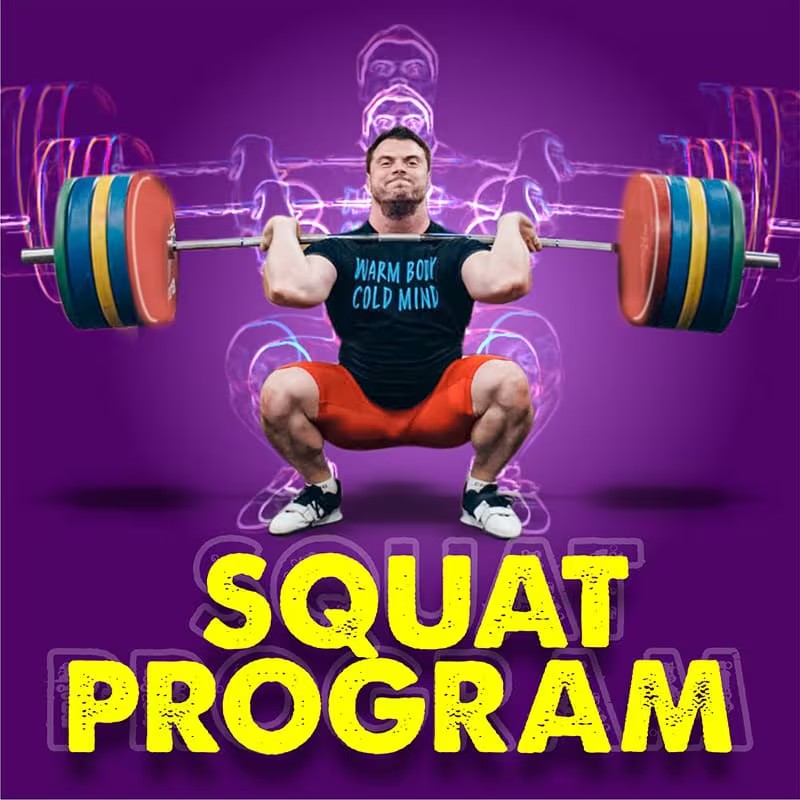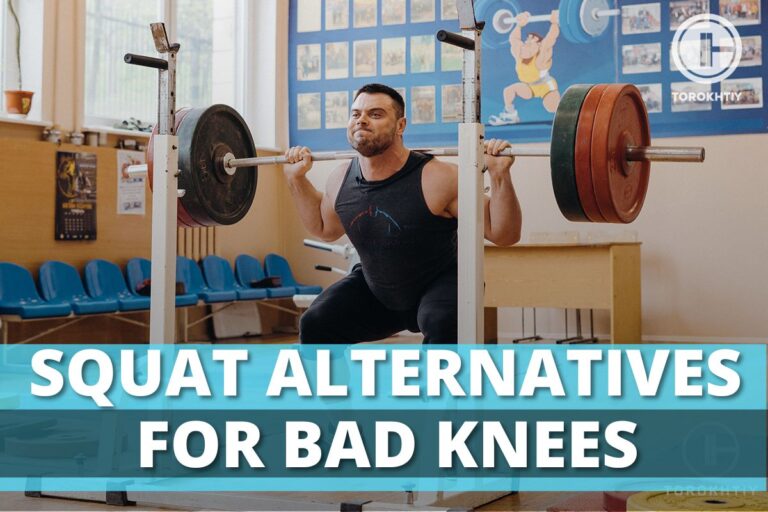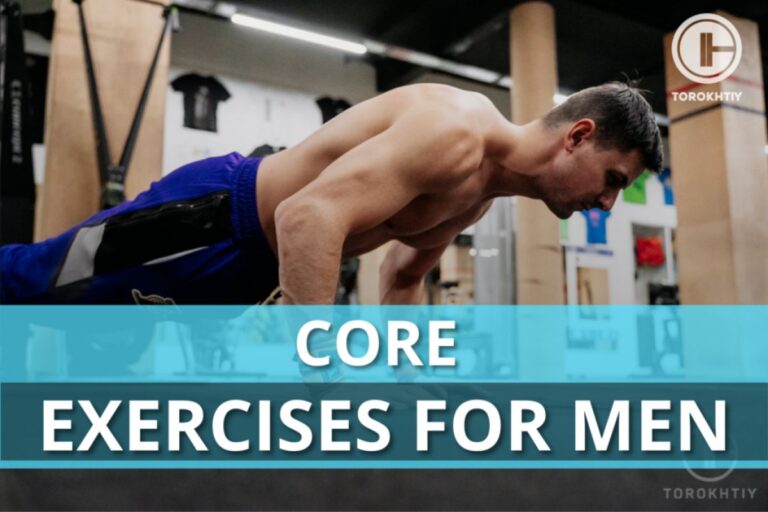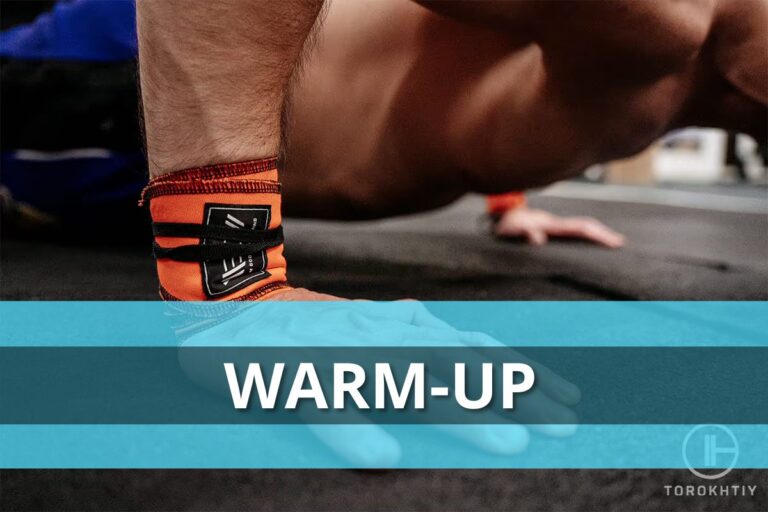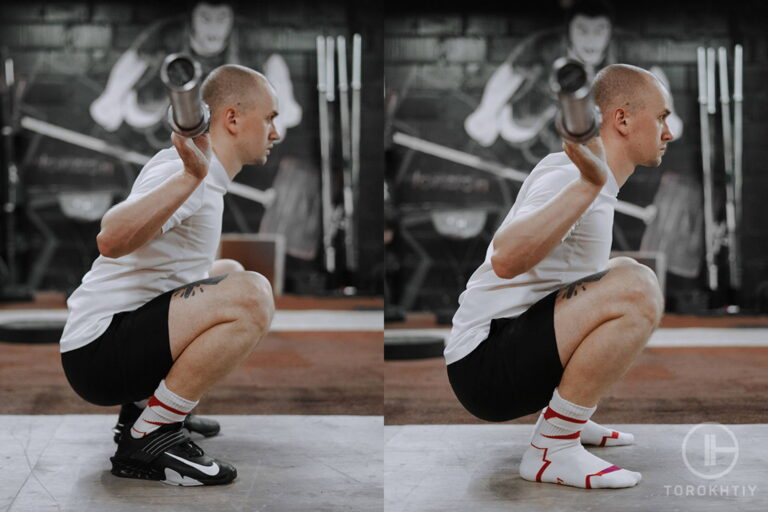How Much Should I Be Able To Squat? Squat Standards Explained
The squat is a cornerstone exercise in strength training, revered for its unparalleled ability to build power, size and functional ability across the entire body. As a compound movement it recruits multiple muscle groups, making it a staple in fitness programs for athletes, bodybuilders and fitness enthusiasts.
The squad doesn’t just fortify legs, but also engages the core, back and shoulders, contributing to overall stronger and more resilient physique.
How much should I be able to squat depends on various factors, including fitness level, age and body weight. As a general guideline, beginners should aim to squat their bodyweight, whereas more experienced individuals may target 1.5 to 2 times their bodyweight.
Squats strength isn’t a one-size-fits-all measure and can be influenced by several key factors. Gender is one such determinant due to physiological and hormonal differences. Men and women often have different strength capacities and body composition, which can affect squat performance.
Experience level is another crucial factor. Novices possess a different strength baseline compared to seasonal lifters, who typically undergo near muscular adaptation, allowing them to squat heavier weights.
Age can’t be overlooked. As we age, muscle mass and strength can naturally decline, making age-specific benchmarks essential for realistic goal setting. Lastly, bodyweight impact squatting ability. A person’s weight in relation to their muscle mass influences the amount they can safely and effectively squat.
Understanding these factors is key to setting appropriate and attainable goals. Whether you are looking to start squatting or aiming to improve your current performance, acknowledging these influences is the first step toward a personalized and effective squat training program.
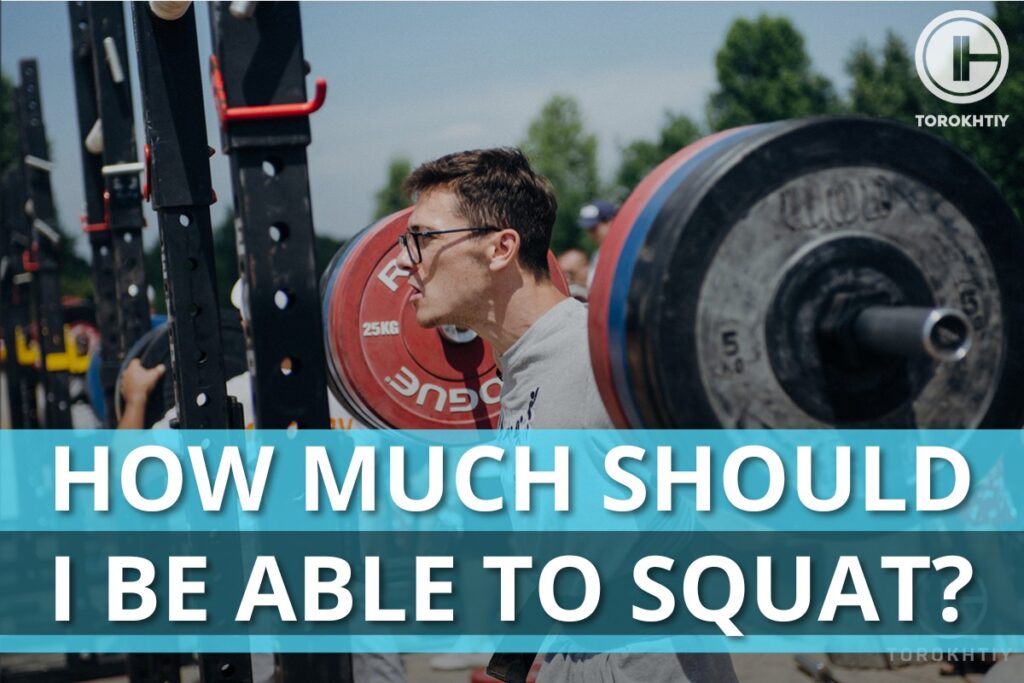
Squat Standards Explained
Squat standards refer to a set of guidelines or benchmarks that help to categorize squatting capabilities based on a variety of factors, such as weight, gender, age and experience level. These standards are typically derived from statistical data and observational analysis of different populations, engaging in resistant resistance training.
They offer a structured way to evaluate once on squatting performance against established criteria, helping individuals to understand where they aim, where they stand in terms of strength and skill level.
The utility of squat standards flies in their role as a tool for objective self-assessment and progress tracking. For instance, a beginner may look at the standards to determine what is considered a respectable starting weight for someone of their gender, body, weight and age.
As they train and develop their abilities, these standards can serve as a motivational milestone that encourage consistent effort and improvement.
For more advanced lifter squat standards can aid in the identification of strength and weaknesses, enabling a more targeted approach to training that prioritizes areas needing development.
Average Squat Weight For Female
When discussing the average squat strength standards for females, it’s important to know that this can vary widely depending on several factors, such as training, background, age, body weight, and individual physiology.
Generally, data suggests that an untrained woman might be able to squat approximately 65% of her body weight for a single repetition, while a woman who has been training regularly may be able to squat closer to 100% of her body weight and those in competitive strength sports even more.
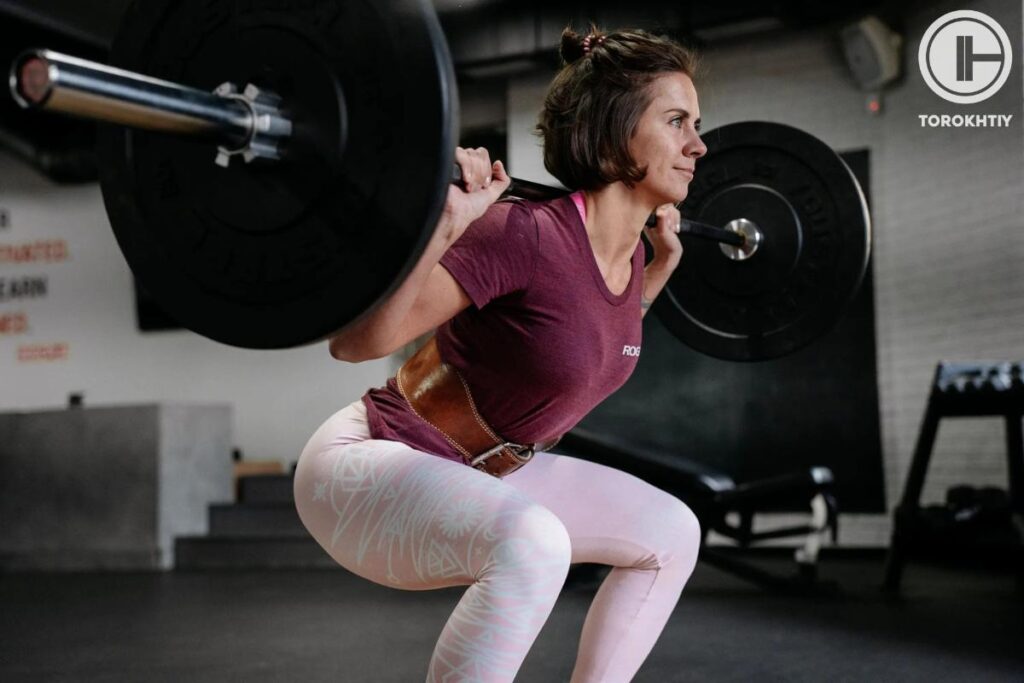
The average squat weight for females is influenced by differences in muscle mass and distribution hormonal factors and lower body strength relative to males. Women typically have a higher portion of their strength and muscle mass, distributed to their lower bodies, which can be advantageous for squatting.
Hormones, such as estrogen and progesterone can influence muscle strength and recovery, and women often experience variations in strength throughout their menstrual cycles.
Furthermore, women tend to have wider hips, which can affect squat mechanics. This can be an advantage in terms of stability during the squat, but may require a different stance or technique compared to man to achieve optimal performance.
Additionally, limp length, muscle fiber composition and tendon insertions play roles in how much an individual female can squat.
Average Squat Weight for Males
The average squat weight for male is often higher than for females, reflecting differences in muscle mass and hormonal profiles. Typically, an untrained male might be expected to squat his body weight, whereas men engaged in regular training, might squat 1.5 to 2 times their bodyweight.
Advanced lifters, and those who compete in strength sports often achieve even greater multiples of their body weight.
The disparity in squat strength between genders primarily stems from physiological and hormonal differences. Men generally have a greater amount of lean muscle mass, especially in the upper body, due to higher testosterone levels, which significantly contribute to overall strength and power.
This hormonal environment is conducive to muscle hypertrophy and strength gains which are crucial for improving squat performance.
Male muscle distribution with a larger portion in the upper body, does influence squat mechanics. While a strong upper body is less directly involved in the squat compared to the lower body, it contributes to maintaining a solid core and stabilizing the torso during the lift. This stability is essential for executing the squat with heavier weights.
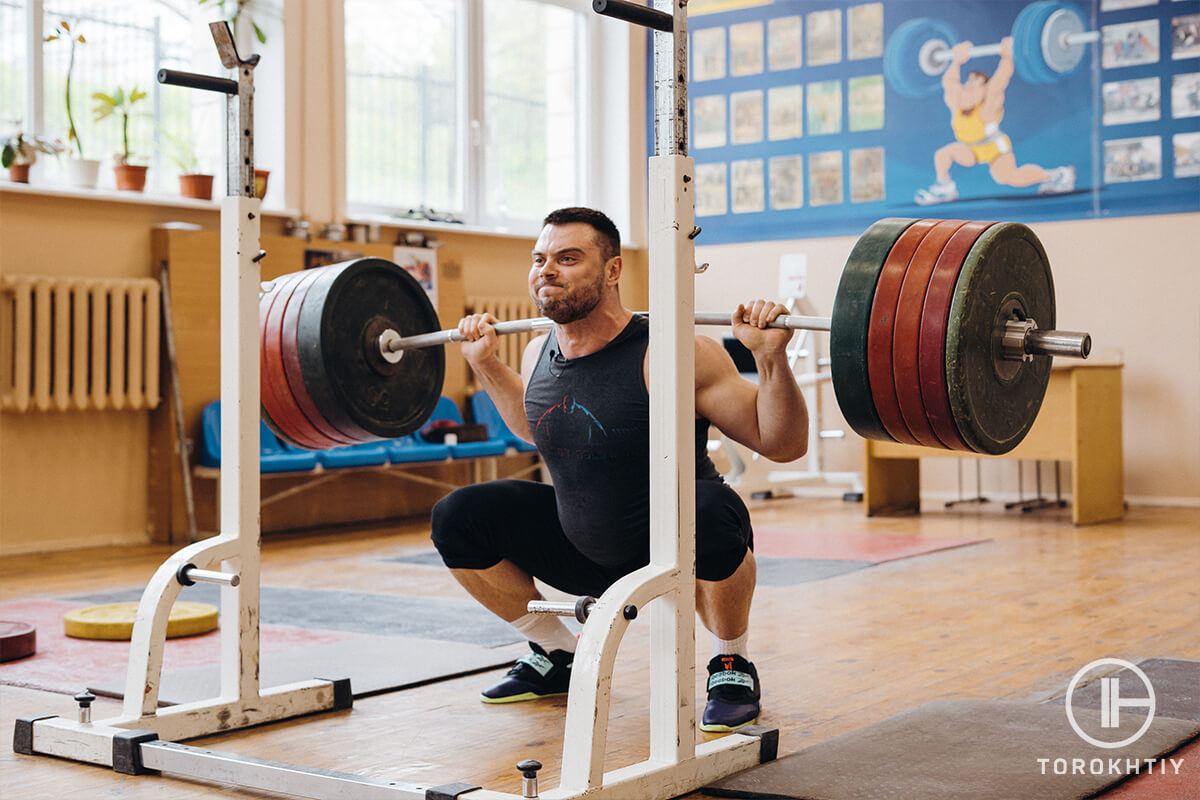
Additionally, men typically have narrower hips than women, leading to different biomechanics and squat movement. A narrower hip structure can change the angle of the femur during the squat, potentially affecting leverage and the capacity to generate force.
It’s essential to recognize that these figures are averages and individual capabilities can vary greatly. Factors, such as specific training history, diet, recovery strategies and even physiological readiness all contribute to the weight of squat.
Regular progressive strength training and individualized programming remain the key to increasing squat strengths for both genders.
Beginner Squat Weight Recommendations
Beginner squat weight refers to the load a novice lifter should start with when first performing squats. This start point is crucial to ensure safety, proper form and the development of strength overtime.
For absolute beginners with no resistance training experience, starting with just the barbell (which typically weighs 45 pounds or 20 kg) is often recommended. This allows the lifter to focus on technique and range of motion without the added challenge of heavy weight.
For individuals with some experience in other forms of exercises or those who have a baseline level of fitness, a modest amount of weight can be added.
A good rule of thumb for these beginners is to perform the squat with a weight that allows for 12-15 repetitions with good form, but causes fatigue in the last few reps. The weight that meets these criteria varies for everyone, but usually ranges between 10-25% of a person’s body weight in addition to the bar weight.
Safety is paramount when starting to squat. Beginners should focus on learning the correct squat form – feet shoulder with a part, back straight and descending as if sitting back into a chair, with the thighs parallel to the floor or lower, depending on mobility.
Engaging with a personal trainer, even for a few sessions can provide valuable feedback and ensure that bad habits are not formed early on.
It is also recommended that beginners perform squats in a squat rack or power cage for safety, allowing them to safely bail out if they cannot complete a lift. Start light, prioritize form and gradually increase the weight each week or as its strength improves. Patience and consistency are the keys to progression and avoiding injury.
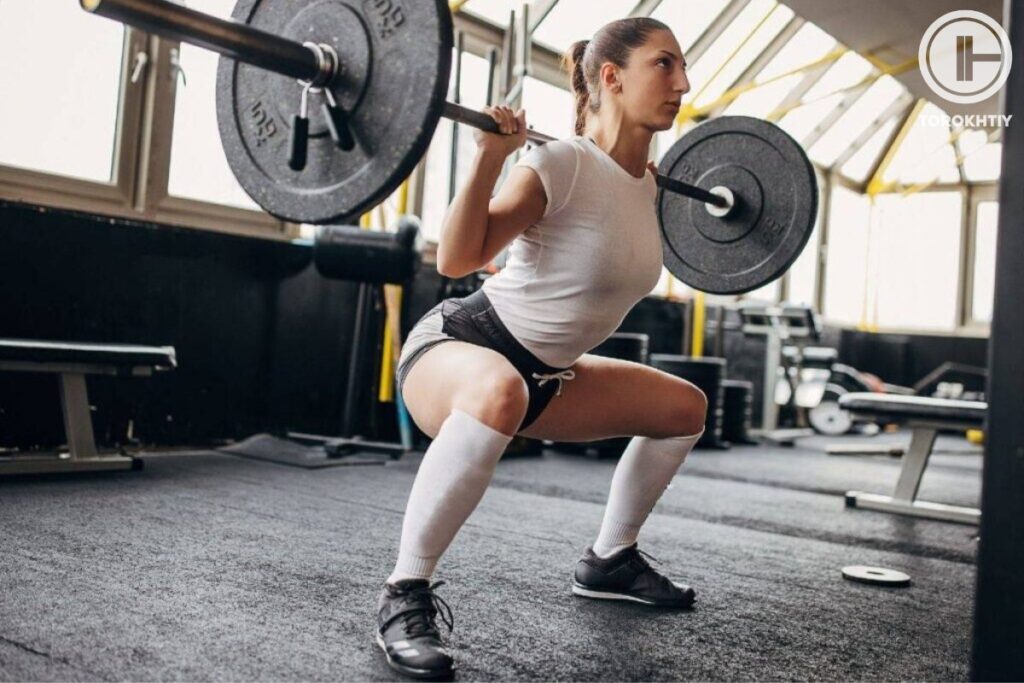
Technical Back Squat Standards
Proper form is critical for safety and effectiveness when performing squats. The lifter should start with feet shoulder width apart and toes slightly turned out.
The bar is unracked at upper back level with the hands, gripping the bar wider than shoulder width to create a stable shelf with the shoulders muscles. The lifter then takes a step back, brace the core and keeps the chest up.
As the squat is initiated, the hips should move back as if it’s sitting into a chair, bending at the knees, while keeping them in line with the toes. It’s vital to maintain a neutral spine throughout the movement, avoiding rounding or over-arching the back.
The depth of squat should ideally bring the thighs parallel to the floor or lower, depending on lifters mobility comfort.
Safety considerations include using a squat rack with safety pins or spotters, especially when lifting heavier weights. It’s also crucial to warm up properly, and to avoid overloading the bar too quickly.
Incremental progression focusing on form before weight, helps prevent injury and build the foundational strength necessary for meeting and suppressing big kilos overtime.
Squat To Bodyweight Ratio
The squat to bodyweight ratio is a comparative metric that evaluates an individual’s squat strength, relative to their body weight. It’s an insightful measure because it provides a level playing field to compare strength across different body sizes and types.
For many fitness enthusiasts and athletes achieving a squat that is equal or greater than their body weight it’s a significant milestone.
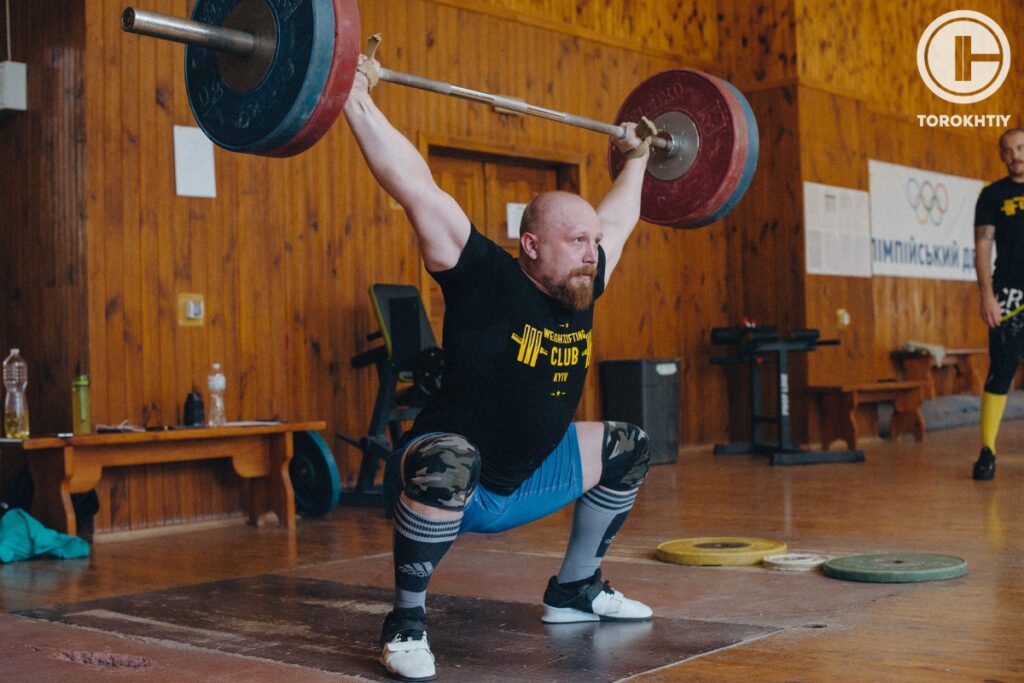
Generally, a healthy squat benchmarks to bodyweight ratio for male lifters is often 1.5 to 2 times bodyweight, whereas for females, a good target can range from 1 to 1.5 times bodyweight.
These figures are influenced by several factors including experience level, age, specific fitness goals. Interpreting this ratio can help in goal setting. For beginners aiming to squat an amount equivalent to bodyweight could be an initial goal, while intermediate and advanced litters might target higher multiples.
However, it’s crucial to approach these goals progressively to maintain safety and proper form.
1. Male Squat Standards By Bodyweight (lb)
| Bodyweight | Beginner | Novice | Intermediate | Advanced | Elite |
|---|---|---|---|---|---|
| 110 | 74 | 114 | 167 | 229 | 298 |
| 120 | 87 | 131 | 187 | 252 | 324 |
| 130 | 100 | 147 | 206 | 274 | 349 |
| 140 | 113 | 162 | 224 | 295 | 373 |
| 150 | 125 | 177 | 242 | 316 | 396 |
| 160 | 138 | 192 | 259 | 336 | 418 |
| 170 | 150 | 207 | 276 | 355 | 439 |
| 180 | 162 | 221 | 292 | 373 | 460 |
| 190 | 174 | 235 | 308 | 391 | 479 |
| 200 | 186 | 248 | 323 | 408 | 499 |
| 210 | 197 | 261 | 338 | 425 | 517 |
| 220 | 209 | 274 | 353 | 442 | 535 |
| 230 | 220 | 287 | 367 | 457 | 553 |
| 240 | 230 | 299 | 381 | 473 | 570 |
| 250 | 241 | 311 | 395 | 488 | 586 |
| 260 | 251 | 323 | 408 | 503 | 603 |
| 270 | 262 | 335 | 421 | 517 | 618 |
| 280 | 272 | 346 | 434 | 531 | 634 |
| 290 | 282 | 357 | 446 | 545 | 649 |
| 300 | 291 | 368 | 459 | 559 | 664 |
| 310 | 301 | 379 | 470 | 572 | 678 |
2. Female Squat Standards By Bodyweight (lb)
| Bodyweight | Beginner | Novice | Intermediate | Advanced | Elite |
|---|---|---|---|---|---|
| 90 | 39 | 71 | 114 | 167 | 226 |
| 100 | 46 | 79 | 124 | 179 | 241 |
| 110 | 51 | 87 | 134 | 191 | 254 |
| 120 | 57 | 94 | 143 | 201 | 267 |
| 130 | 63 | 101 | 152 | 212 | 279 |
| 140 | 68 | 108 | 160 | 222 | 290 |
| 150 | 73 | 115 | 168 | 231 | 301 |
| 160 | 78 | 121 | 175 | 240 | 311 |
| 170 | 83 | 127 | 183 | 248 | 320 |
| 180 | 88 | 133 | 190 | 256 | 329 |
| 190 | 93 | 138 | 196 | 264 | 338 |
| 200 | 97 | 144 | 203 | 272 | 347 |
| 210 | 101 | 149 | 209 | 279 | 355 |
| 220 | 106 | 154 | 215 | 286 | 363 |
| 230 | 110 | 159 | 221 | 293 | 371 |
| 240 | 114 | 164 | 227 | 299 | 378 |
| 250 | 118 | 169 | 232 | 306 | 385 |
| 260 | 122 | 173 | 238 | 312 | 392 |
Average Squat by Age
The concept of average squat by age recognizes that strength and squat performance can vary significantly throughout an individual’s lifespan.
Generally, peak physical strength is reached between late 20s and early 30s, after which there may be a gradual decline. However, this decline is not inevitable and can be mitigated or even reversed with regular strength training.
For individuals in their 20s and 30s the average squat weight can be higher due to optimal levels of muscle mass and strength. It’s during this year that many can work towards achieving their personal best in terms of squat, weight often written, advanced or elite standards.
As individuals enter their 40s and beyond, the average squat weight might begin to decrease, but this is highly variable and depends on several factors, including training history, overall health and lifestyle.
Importantly, strength training remains beneficial at any age, contributing to muscle maintenance, improved metabolism, and bone density. Even if absolute strength levels might not be the same as a younger years, relative strength and functional fitness can still be high.
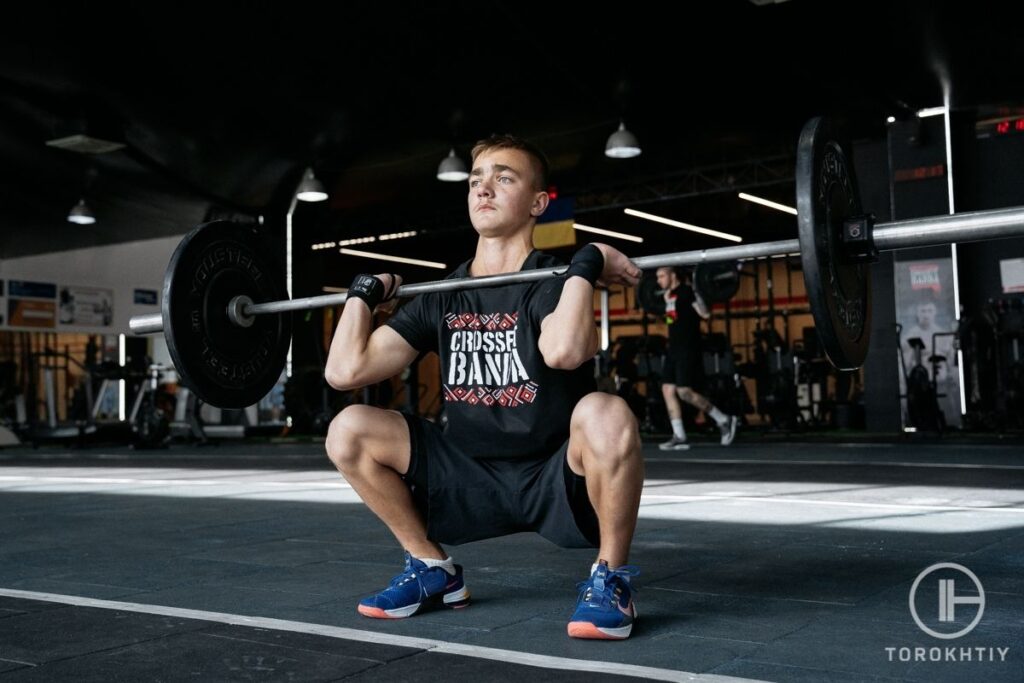
Age impacts squat performance through changes in muscle elasticity, recovery time and joint health.
Older adults may find that focusing on form technique and controlled movements yields better results than striving for maximum weight. Incorporating flexibility and mobility work alongside regular squat training can help maintain performance and reduce the risk of injury.
1. Male Squat Standards By Age (lb)
| Age | Beginner | Novice | Intermediate | Advanced | Elite |
|---|---|---|---|---|---|
| 15 | 120 | 175 | 244 | 324 | 411 |
| 20 | 138 | 201 | 279 | 371 | 471 |
| 25 | 141 | 206 | 287 | 381 | 483 |
| 30 | 141 | 206 | 287 | 381 | 483 |
| 35 | 141 | 206 | 287 | 381 | 483 |
| 40 | 141 | 206 | 287 | 381 | 483 |
| 45 | 134 | 195 | 272 | 361 | 458 |
| 50 | 126 | 183 | 255 | 339 | 430 |
| 55 | 116 | 170 | 236 | 314 | 398 |
| 60 | 106 | 155 | 216 | 286 | 363 |
| 65 | 96 | 140 | 195 | 259 | 328 |
| 70 | 86 | 126 | 175 | 232 | 294 |
| 75 | 77 | 112 | 156 | 208 | 263 |
| 80 | 69 | 100 | 140 | 186 | 235 |
| 85 | 62 | 90 | 125 | 166 | 211 |
| 90 | 56 | 81 | 113 | 150 | 190 |
2. Female Squat Standards By Age (lb)
| Age | Beginner | Novice | Intermediate | Advanced | Elite |
|---|---|---|---|---|---|
| 15 | 55 | 91 | 137 | 193 | 255 |
| 20 | 63 | 104 | 157 | 221 | 292 |
| 25 | 65 | 107 | 161 | 227 | 300 |
| 30 | 65 | 107 | 161 | 227 | 300 |
| 35 | 65 | 107 | 161 | 227 | 300 |
| 40 | 65 | 107 | 161 | 227 | 300 |
| 45 | 62 | 101 | 153 | 215 | 284 |
| 50 | 58 | 95 | 143 | 202 | 267 |
| 55 | 54 | 88 | 133 | 187 | 247 |
| 60 | 49 | 80 | 121 | 170 | 225 |
| 65 | 44 | 72 | 109 | 154 | 203 |
| 70 | 40 | 65 | 98 | 138 | 183 |
| 75 | 35 | 58 | 88 | 123 | 163 |
| 80 | 32 | 52 | 78 | 110 | 146 |
| 85 | 28 | 47 | 70 | 99 | 131 |
| 90 | 26 | 42 | 63 | 89 | 118 |
Squat Weight Progression
Squat weight progression refers to the systematic increase in the weight lifted during the squat exercise overtime. This concept is central to strength training principles, emphasizing the importance of gradually challenging the muscles to adapt and grow stronger.
Effective squat weight progression is a cornerstone of continuous improvement in squat strength, contributing to overall fitness, muscle hypertrophy and athletic performance.
Progressive overload is key to squat weight progression. This involves incrementally increasing the weight, frequency, number of reps in your squat routine to continuously challenge your muscles beyond their current capacity.
However, it’s crucial that these increases are made judiciously to avoid injury and ensure sustainable progress. A common guideline is to increase the weight by no more than 5-10% when you can comfortably complete your current sets and reps with good form.
Focusing on form cannot be overstated. Even as you aim to increase squat weight, maintaining proper technique ensures that you target the right muscle groups without putting undue stress on joints and ligaments. It’s often beneficial to perform squats in front of a mirror, or record your session to critique and improve your form.
🔻12 Week Squat Program by Oleksiy Torokhtiy
Do you want to double your squat strength? In just 12 weeks, you’ll be able to boost your squat results.
This program transforms any ordinary squat into a powerful athletic movement.
What’s included:
- 12 weeks of squat programming;
- Effective combination of sets, reps, and weights;
- Fully designed and coached by Oleksiy Torokhtiy;
- Over 60+ movements, banded work, and weight training;
- Accessory work for core, joint stability and injury prevention;
- Max out on back squat and front squat at the end.
Start now and boost your squat results!
Listening to your body is essential to provide over training and injuries. Rest and recovery are just as important as the workouts themselves. If you experience persistent soreness, fatigue or any pain while squatting, it may be a sign to reduce the intensity or volume or to give your body more time to recover.
By adhering to these principles, lifters can safely and effectively progress in their squat strength, building a solid foundation for overall physical development and achieving fitness goals.
FAQ
How Much Should a 70 kg Man Squat?
A 70 kg man who is new to squatting might aim to squat approximately 70 kg, which is about equivalent to his body weight, as a starting goal for a one-rep max. Experienced lifters may aim for 1.5 to 2 times their body weight.
How Much Should a 60 kg Person Squat?
A 60 kg person might start with a squat weight that is around their own bodyweight. Beginners should start lighter to focus on form while more advanced individuals may target upwards of 90 kg for one rep max, following strength standards.
Is 50 kg a Good Squat?
Whether 50 kg is a good squat weight depends on the individual’s experience level, strength and body weight. For a beginner or someone of a lighter body weight, 50 kg may be an excellent starting point or working weight. More experienced lifters may use this as a warm-up weight.
Conclusion
Squats are pivotal exercises in any fitness program, offering extensive benefits for strength, mobility and overall health. This article has underscored the individual nature of squats strength, revealing how factors such as gender, age, experience, and bodyweight influence performance.
Hope you got an answer on – how much should you squat. We would love to hear your experience and tips on improving squat strength. Share your journey achievements and any questions you have in the comments below. Let’s learn from each other and grow stronger together.
Referenses:
- Zawadka M, Smolka J, Skublewska-Paszkowska M, Lukasik E, Gawda P. How Are Squat Timing and Kinematics in The Sagittal Plane Related to Squat Depth? J Sports Sci Med. 2020 Aug 13;19(3):500-507. PMID: 32874102; PMCID: PMC7429430.
- Larsen S, Kristiansen E, Helms E, van den Tillaar R. Effects of Stance Width and Barbell Placement on Kinematics, Kinetics, and Myoelectric Activity in Back Squats. Front Sports Act Living. 2021 Sep 1;3:719013. doi: 10.3389/fspor.2021.719013. PMID: 34541522; PMCID: PMC8440835.
- Clark DR, Lambert MI, Grigson C, Hunter AM. Impact of resistance training status on trunk muscle activation in a fatiguing set of heavy back squats. Eur J Appl Physiol. 2021 Feb;121(2):597-608. doi: 10.1007/s00421-020-04540-0. Epub 2020 Nov 18. PMID: 33206252; PMCID: PMC7862542.
- Buscà B, Aguilera-Castells J, Arboix-Alió J, Miró A, Fort-Vanmeerhaeghe A, Peña J. Influence of the Amount of Instability on the Leg Muscle Activity During a Loaded Free Barbell Half-Squat. Int J Environ Res Public Health. 2020 Oct 31;17(21):8046. doi: 10.3390/ijerph17218046. PMID: 33142906; PMCID: PMC7672597.
- Stien N, Andersen V, Engelsrud GH, Solstad TEJ, Saeterbakken AH. The effects of technological and traditional feedback on back squat performance in untrained women. BMC Sports Sci Med Rehabil. 2022 Sep 2;14(1):163. doi: 10.1186/s13102-022-00556-5. PMID: 36056403; PMCID: PMC9438286.
- All photos are made by our Torokhtiy Media Team
Why Trust Us?
With over 20 years in Olympic Weightlifting, our team does its best to provide the audience with ultimate support and meet the needs and requirements of advanced athletes and professional lifters, as well as people who strive to open new opportunities and develop their physical capabilities with us.
By trusting the recommendations of our certified experts in coaching, nutrition, dietology, and sports training programming, as well as scientific consultants, and physiotherapists, we provide you with thorough, well-considered, and scientifically proven content. All the information given in the articles concerning workout programming, separate exercises, and athletic performance, in general, is based on verified data. We ensure that you can rely on our professionals’ pieces of advice and recommendations that can be treated as personalized ones which will benefit you and fully meet your needs.
The product testing process is described in more detail here
Author: Sergii Putsov
Head of Sport Science, PhD
Best Results: Snatch – 165 kg,
C&J – 200 kg
Sergii Putsov, Ph.D., is a former professional weightlifter and National team member, achieving multiple medals in the 94 kg weight category at national competitions. With a Master’s degree in “Olympic & Professional Sport Training” and a Sport Science Ph.D. from the International Olympic Academy, Greece, Sergii now leads as the Head of Sport Science. He specializes in designing training programs, writing insightful blog articles, providing live commentary at international weightlifting events, and conducting educational seminars worldwide alongside Olympic weightlifting expert Oleksiy Torokhtiy.

